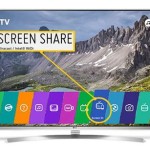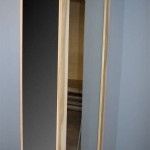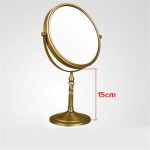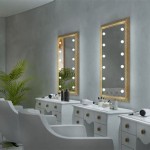How Much Are Mirror TVs? A Comprehensive Price Guide
Mirror TVs, a sophisticated blend of entertainment technology and interior design, have steadily gained popularity. These innovative displays seamlessly integrate into any room, functioning as a regular mirror when turned off and transforming into a high-definition television when switched on. This dual functionality makes them an attractive option for homeowners, businesses, and interior designers seeking to maximize space and aesthetics. However, understanding the cost implications is crucial before investing in a mirror TV. The price of a mirror TV can vary greatly depending on several factors, including screen size, technology, brand, features, and installation requirements. This article provides a comprehensive guide to understanding the pricing structure of mirror TVs, exploring the key factors that influence cost and providing a general price range for different types of models.
The mirror TV market is diverse, offering numerous options to suit varying budgets and design preferences. Understanding the nuances of these options is paramount to making an informed purchase. While the initial investment might seem significant compared to a standard television, the value proposition extends beyond mere entertainment. Mirror TVs offer a unique combination of functionality and aesthetic appeal, contributing to a more streamlined and visually appealing living space. Therefore, a thorough understanding of the cost drivers is essential to determine if a mirror TV aligns with one's needs and budget.
Key Factors Influencing Mirror TV Prices
Several factors contribute to the wide range of prices observed in the mirror TV market. These factors can be broadly categorized into screen size and technology, brand reputation and features, and installation complexities. Understanding each of these elements allows for a more accurate assessment of the overall cost and ensures that the selected mirror TV meets specific needs and expectations.
Screen Size and Technology: The size of the mirror TV screen directly correlates with its price. Larger screens naturally require more materials, more complex manufacturing processes, and more advanced display technology, thus increasing the overall cost. For example, a 32-inch mirror TV will typically cost significantly less than a 65-inch model. The underlying display technology also plays a crucial role. LED-backlit LCD panels are the most common and generally the most affordable option. OLED (Organic Light Emitting Diode) technology, known for its superior contrast ratios and vibrant colors, is typically more expensive. Quantum Dot technology, which enhances color accuracy and brightness, also adds to the price. Furthermore, the resolution of the screen—whether it is HD (720p), Full HD (1080p), 4K Ultra HD (2160p), or even 8K—will significantly impact the cost. Higher resolutions require more processing power and advanced panel technology, resulting in a higher price tag.
The type of mirror used also contributes to the overall cost. Standard mirrors, while reflective, may not provide optimal image clarity when the TV is on. High-quality, low-iron mirrors are often preferred because they offer better light transmission and minimize color distortion. These specialized mirrors, however, command a premium price. Manufacturers must carefully balance the mirror's reflective properties with its ability to allow light from the display to pass through without compromising image quality. This delicate balance requires advanced materials and manufacturing techniques, which increase the cost of the final product.
Brand Reputation and Features: Established brands with a proven track record of quality and reliability often command higher prices. These brands typically invest heavily in research and development, ensuring that their products incorporate the latest technologies and meet stringent quality control standards. While lesser-known brands may offer more budget-friendly options, the quality and longevity of their products may not be comparable to those offered by established manufacturers. Consequently, the perceived value and peace of mind associated with a reputable brand often justify the higher price point.
Beyond brand reputation, the features included in a mirror TV can significantly influence its price. Smart TV capabilities, such as built-in Wi-Fi, streaming app compatibility, and voice control integration, add to the overall cost. Additional features like integrated speakers, ambient lighting, and custom frame options also contribute to the price. Mirror TVs with advanced connectivity options, such as multiple HDMI ports, USB ports, and Bluetooth capabilities, will generally be more expensive. Furthermore, features that enhance the viewing experience, such as HDR (High Dynamic Range) support and advanced image processing algorithms, can also increase the price. Customization options, such as the ability to choose the frame material, size, and finish, can also add to the cost. The level of customization offered by a manufacturer directly impacts the final price of the mirror TV.
Installation Complexities: The cost of installation can vary significantly depending on the complexity of the project. Simple wall-mounted installations are generally less expensive than installations that require custom framing, electrical work, or integration with existing home automation systems. If the mirror TV is being installed in a bathroom or other high-humidity environment, additional precautions may be necessary to protect the electronics from moisture damage. This can involve the use of waterproof enclosures, specialized wiring techniques, and other measures that add to the installation cost. Furthermore, if the installation requires running wires through walls or ceilings, the cost will increase. Hiring a professional installer is highly recommended, especially for complex installations, to ensure that the mirror TV is installed correctly and safely. The cost of professional installation can range from a few hundred dollars to several thousand dollars, depending on the scope of the project.
The location of the installation also plays a role in the overall cost. Installations in remote areas or locations with limited access may incur additional travel charges for the installer. Furthermore, if the installation requires special permits or inspections, the cost will increase. Before purchasing a mirror TV, it is advisable to obtain quotes from multiple installers to get a clear understanding of the installation costs involved. This will help to avoid any unexpected expenses and ensure that the installation is completed to a high standard.
General Price Ranges for Different Types of Mirror TVs
While the exact price of a mirror TV depends on the factors mentioned above, it is possible to provide a general price range for different types of models. This provides a starting point for budgeting and helps in narrowing down the options based on individual requirements and preferences. The prices provided are estimates and can vary depending on the specific brand, retailer, and features included.
Small Mirror TVs (Under 32 inches): These smaller mirror TVs are typically used in bathrooms, dressing rooms, or as accent pieces in smaller spaces. They are often more affordable and can range in price from $500 to $2,000. The price depends on the screen resolution, mirror quality, and smart features included. Basic models with standard mirror quality and HD resolution will be at the lower end of the price range, while models with high-quality mirrors, Full HD resolution, and smart TV capabilities will be at the higher end.
Mid-Size Mirror TVs (32-55 inches): These mid-size mirror TVs are suitable for bedrooms, living rooms, or smaller conference rooms. Their price range is typically between $2,000 and $5,000. The cost is influenced by the screen technology (LED, OLED, or Quantum Dot), resolution (Full HD or 4K), and smart features. Models with OLED or Quantum Dot technology and 4K resolution will be more expensive. The inclusion of premium features such as HDR support, advanced image processing, and integrated speakers can also increase the price.
Large Mirror TVs (55 inches and Above): Large mirror TVs are designed for larger living rooms, home theaters, or commercial spaces. They offer an immersive viewing experience and can range in price from $5,000 to $15,000 or more. These models typically feature 4K or 8K resolution, advanced display technologies, and a wide range of smart features. High-end models may also include custom frame options, integrated sound systems, and advanced connectivity options. The price can also be significantly higher for custom-built mirror TVs with unique designs or specialized features.
Additional Costs to Consider
Beyond the initial purchase price and installation costs, there are other factors that can contribute to the overall cost of owning a mirror TV. These include extended warranties, maintenance, and potential repairs. It is prudent to factor these expenses into the budget to avoid any unforeseen financial burdens.
Extended Warranties: While most mirror TVs come with a standard manufacturer's warranty, it may be worthwhile to consider purchasing an extended warranty for added protection. Extended warranties can cover repairs or replacements beyond the standard warranty period and can provide peace of mind in case of unexpected issues. The cost of an extended warranty can vary depending on the length of the coverage and the specific terms and conditions. It is important to carefully review the terms of the warranty before making a purchase to understand what is covered and what is not.
Maintenance: Maintaining a mirror TV is relatively straightforward, but regular cleaning is essential to keep the mirror surface free from dust and fingerprints. Using a soft, lint-free cloth and a mild glass cleaner is generally recommended. Avoid using abrasive cleaners or harsh chemicals, as these can damage the mirror surface. In addition, it is important to protect the mirror TV from excessive moisture and humidity, especially in bathrooms or other high-humidity environments. Regular maintenance can help to prolong the life of the mirror TV and ensure optimal performance.
Potential Repairs: While mirror TVs are generally durable and reliable, they are still electronic devices and can be subject to malfunctions or failures. If the mirror TV requires repairs, the cost can vary depending on the nature of the problem and the availability of replacement parts. It is advisable to have the mirror TV serviced by a qualified technician to ensure that the repairs are carried out correctly and safely. Some repairs may be covered under the manufacturer's warranty or an extended warranty, while others may need to be paid out of pocket. It is important to keep the warranty information readily available in case repairs are needed.

Vanity Mirror Tv Vanishing Television For Your Bathroom

Dielectric Tv Mirror Flawless Clarity For Your

Fiam Italia Mirage Glass Tv Mirror By Daniel Libeskind For At 1stdibs How Much Do Mirrors Cost In Mirrored

Led Bathroom Mirror Tv Magic Wall Full Hd China Home Decoration Made In Com

Creative Tvs With Rollable Screens Art Frames And Easels Wirecutter

Mirror Tv Picture Frame Weybridge Audio

Creative Tvs With Rollable Screens Art Frames And Easels Wirecutter

Wall Mounted Tv Unit Designs 10 Trending Ideas For Your

Tvs Star City Plus Rear View Mirror Image Bikewale

How Much Does Tv Installation Cost And Other Questions








